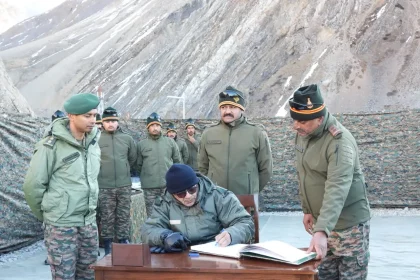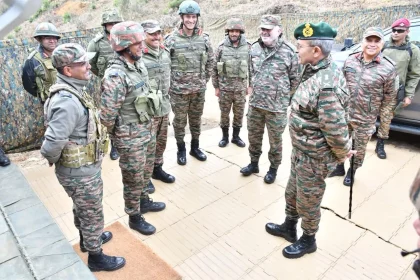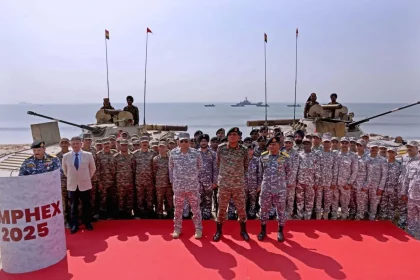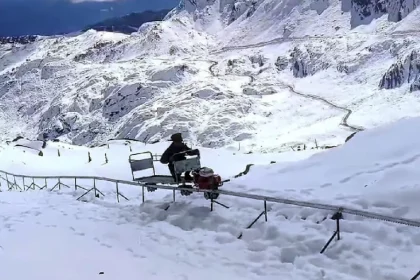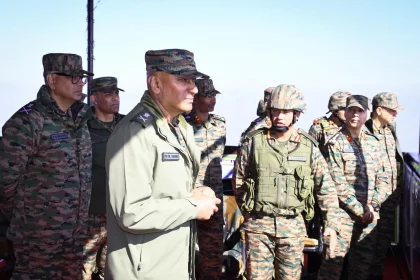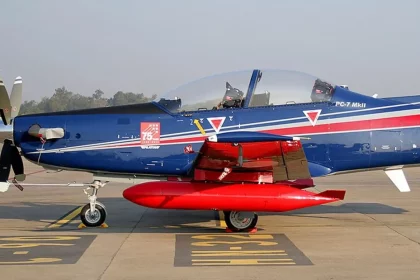Defence Secretary Rajesh Kr Singh and Lt Gen Raghu Srinivasan Review High-Altitude Infrastructure Push in Kumaon Sector
Defence Secretary Shri Rajesh Kr Singh, IAS, along with Lt Gen Raghu Srinivasan, Director General Border Roads, visited the Kumaon…
Lt Gen RC Tiwari Reviews Operational Preparedness Along Northern Borders
Eastern Army Commander praises Spear Corps for professionalism, joint readiness and technological excellence during forward area visit.
Air Marshal Nagesh Kapoor Addresses Joint Press Conference After Amphibious Phase of Tri-Service Exercise Trishul-25
Tri-Service Forces Demonstrate Joint Amphibious Capability Under ‘JAI’ Theme.
Indian Army Deploys Indigenous 16,000-ft Monorail System in Arunachal to Boost High-Altitude Logistics
New high-altitude logistics system boosts troop mobility in Arunachal’s remote Himalayan sectors.
Lt Gen Pratik Sharma Reviews Operational Preparedness in Nowshera and Bimber Gali Sectors
Army Commander Reviews LoC Readiness, Lauds Troops’ High Morale and Vigilance.
IAF Pilatus PC-7 MK-II Trainer Aircraft Crashes Near Chennai, Pilot Ejects Safely
Pilot Escapes with Minor Injuries; Court of Inquiry Ordered into Training Mishap.

